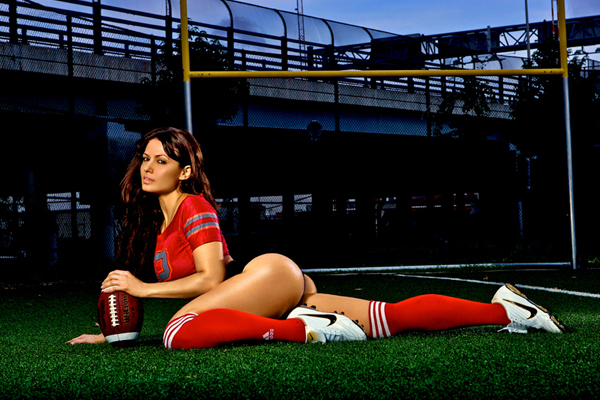There's no Korean mega-spa in the Boston area, so visiting King Spa was high on my list when I came to Chicago to visit for the holidays. Living here for a year, I found that the aerialists were familiar with Korean spas, but the polers were completely in the dark. I tried to arrange an outing, but we got snowed out, and meanwhile I was surprised at how much misinformation there was out there about what it's all about. So I thought I'd write it up so people who have never been might be less intimidated to check it out.
The following FAQ is about King Spa in Niles IL, but mostly applies to other Korean spas as well.
How much is a manicure?
That's not what you do here. I think some Korean spas might offer that kind of service, but mostly it's about visiting the facilities (saunas, hot tubs, etc), and optionally paying for salt scrubs and massages.
Is it a massage parlor with happy endings?
No.
Is it a gay hook-up joint?
Qualified no. That's definitely not what it's about--it's normal to see families with little kids running around. On the other hand, these places are open 24 hours, so I don't know what might go on in the men's section in the wee hours.
Do you have to be naked?
Not exactly. You'll definitely see naked people in the hot tub/shower area. However, men and woman are in different rooms at this point (attached to the locker rooms), so it's not that different than just getting dressed in front of people.
Do you have to be naked?
I'm going with no on this one. My experiences have varied. Last time I was at King Spa, it was a weekday afternoon, and most of the women were in bathing suits. (My male friend said all the guys were nude.) This time, Sunday night, EVERYONE in the hot tub area was naked. So whether they started enforcing a no-clothes-allowed rule or it was just a different crowd, I'm not sure. But if you're feeling modest, bring a swimsuit just in case.
Keep in mind that this is only for one small part of the facility. Most areas are coed and clothed. You could just skip over the tubs if you weren't comfortable with all the boobs. I'm sure no one will complain if you shower in a swimsuit.
What should I bring/wear?
You don't need to bring anything besides your credit card, but you could potentially bring a swimsuit (see below). You won't be wearing your clothes, so just wear something comfy that you can get on and off easily. Slip-on sneakers and yoga pants are great. Don't wear make-up, as you don't want it running once you get wet/sweaty.
I think it's easiest to go to these places with someone who's been before, but in case you don't have that person on hand, I'm going to walk you through how a visit to King Spa works:
You check in at the front desk. Don't listen to your GPS--the entrance they bring me to, by the Home Depot, is actually the back door, and then you have to walk around to the front, where they have the real entrance and parking. It's much more impressive-looking if you see the real entrance first.
You pay $25 (they have a loyalty card you can get, something like buy 10 visits get 1 free) and receive a bracelet with your locker number and key.
Then you enter either the men's or women's entrance, which brings you to the locker room. BEFORE YOU GET ALL THE WAY IN, you'll see a sign to remove your shoes. There is a shoe locker area that comes before the main locker area. It's the same locker number and key for both lockers. So lock your shoes up and continue on to the main locker room.
In the main locker room, you'll find your locker, shelves full of pink (girls) or grey (guys) clothing, stacks of not full-sized white towels, and toiletries at the sinks, as well as lots of staff members keeping everything immaculate. There's also a counter where you can buy things like hair clips or socks.
The outfits are arranged by size: S, M, L, and child (which are yellow). They consist of a baggy tshirt and long shorts that you'll wear in all unisex areas. Some people I've tried to explain this to get weirded out at this point, but it's actually awesome. First of all, it ensures that things say sanitary--no dirty clothes from outside. Second, you're gonna sweat all over them, so aren't you glad it's not your own clothes you're mussing up? Third, they may not be flattering, but they get the job done. They cover enough of your body that it's easy to sit or lay on the hot floor without feeling burned, and the material is thick enough that nothing is pooking through.
You don't need to put on your outfit yet, though. Instead, put all your belongings and all your clothes in your locker (unless you're wearing a bathing suit, but don't quote me on that) and head into the hot tub area.
Oh one more thing: put your hair up. They have rubber bands. Not ideal, I know, but I got away this last time with a long braid so I didn't get a rubber band stuck in my hair,
Jump into one of the shower stations. You can change the temperature of the water separately from the pressure. They are set to 40 C by default.
Then you can get in the tubs. They have a few different ones, but the temperature difference is not that great (they do have a colder one, but I've never been in that--that is so not why I'm at the spa), so just go in whichever has the most room. Also in this area is the steam sauna. The steam sauna at King Spa is amazing. The temperature is perfect and it smells good. Big upgrade from the ones at NYSC I used to go to.
They also have sitting-down shower stations. I tried it last time I was here, but I'm just not Asian enough to get it.
This is also the area where you'd get special services like salt scrubs. I've never had one, as I am a cheap bastard and don't want to pay for it. Those are off to the side behind barriers.
After you're done in the hot tubs and steam room, you can dry off and put your outfit on to head into the main area. Now, you may be tempted to wear something under your outfit, but it will not be comfortable once you start sweating balls.
Lounge. Photo from kingspa.com
The main area is made up mostly of different-themed saunas in little igloos/huts, and big princess chairs to sit in. They have free wifi, chess boards, flat screen TVs (playing the Simpsons when I was there), and even if you just come here to sit in the big pink princess chairs I think it's money well spent.
Inside of the Salt Room, photo from kingspa.com
The saunas are mostly based on different minerals in the walls--stuff like amethyst, ochre, and charcoal. And it's not subtle, it's like, the walls are filled with charcoal, you can see it and touch it. The huts are cute and little, can fit maybe 10 people at a time. Most of them have mats and hard head-rests so you can lay down, but you'll usually at least want to keep your knees bent to make room for everyone. (Sometimes the saunas are crowded and sometimes they are deserted, and that can change in an instant if a group of friends comes or goes.) There's an especially hot room (fire room or something) for which you have to crawl through a tiny door. I'm guessing that's so not so much hot air gets out when people come and go. They also have special mats and rules for that room. It's hotter than the others but not mind-blowingly so; you'll be fine.
There is a food court that serves smoothies and Korean food. I've never had anything from the food court at King Spa, but you should probably plan on eating there. They don't allow outside food, and you'll be hungry. Besides the "swimming" (even if you're not doing laps, being in the water can make you ravenous), being in a sauna raises your heart rate so it's kind of like exercise. So if you plan on staying for more than an hour, expect to get hungry.
There's also a movie theatre. I didn't watch anything (by the time I was ready to get out of the saunas they were between showings), but the lineup for the night included The Mask, Son of the Mask, and Remember the Titans. The theatre has giant cushy recliners, I think the same ones as in the meditation room.
The meditation room is upstairs. You can either "meditate" coed or in the women's or men's section. It's basically the same as what Spa Castle calls the nap area. Big cushy recliners that go all the way back. There were also some mats and headrests on the floor that were a little cushier than the ones in the saunas. Either way, no one was actually meditating. Just napping, chatting, reading, or playing on their phones.
So who goes to these things? Well, it probably is mostly Koreans, but far from exclusively. There are a lot of Russians and other Eastern Europeans, who have more of a spa culture than we do. There are plenty of Americans, as well. You will NOT feel out of place!
King Spa has far fewer facilities than NY's Spa Castle, but the spirit is the same and the feel (since I've last gone to Spa Castle, which was before it was called Spa Castle) is better. It's a good thing to do with friends, even though you're technically not supposed to talk in the saunas. There are plenty of other places where you can hang out and chat. You just have to be comfortable seeing your friends naked. In my case, I couldn't find anyone to go with me this time (holidays and family and all), but I was having a stressful day (holidays and family and all) and some quiet time by myself to soak and sweat was just what I needed. I felt a million times better the instant I got into the first hot tub. It really was the best present I could have given myself.
STATS:
King Spa and Sauna, Niles, IL
Amenities: lockers, gender-separated hot tubs/saunas/showers, 8 different saunas, movie theatre, "meditation" rooms, food court. Pay extra for other services. Probably some other stuff I'm forgetting.
Drop-in price: $25
Photo of King Spa entrance by me












